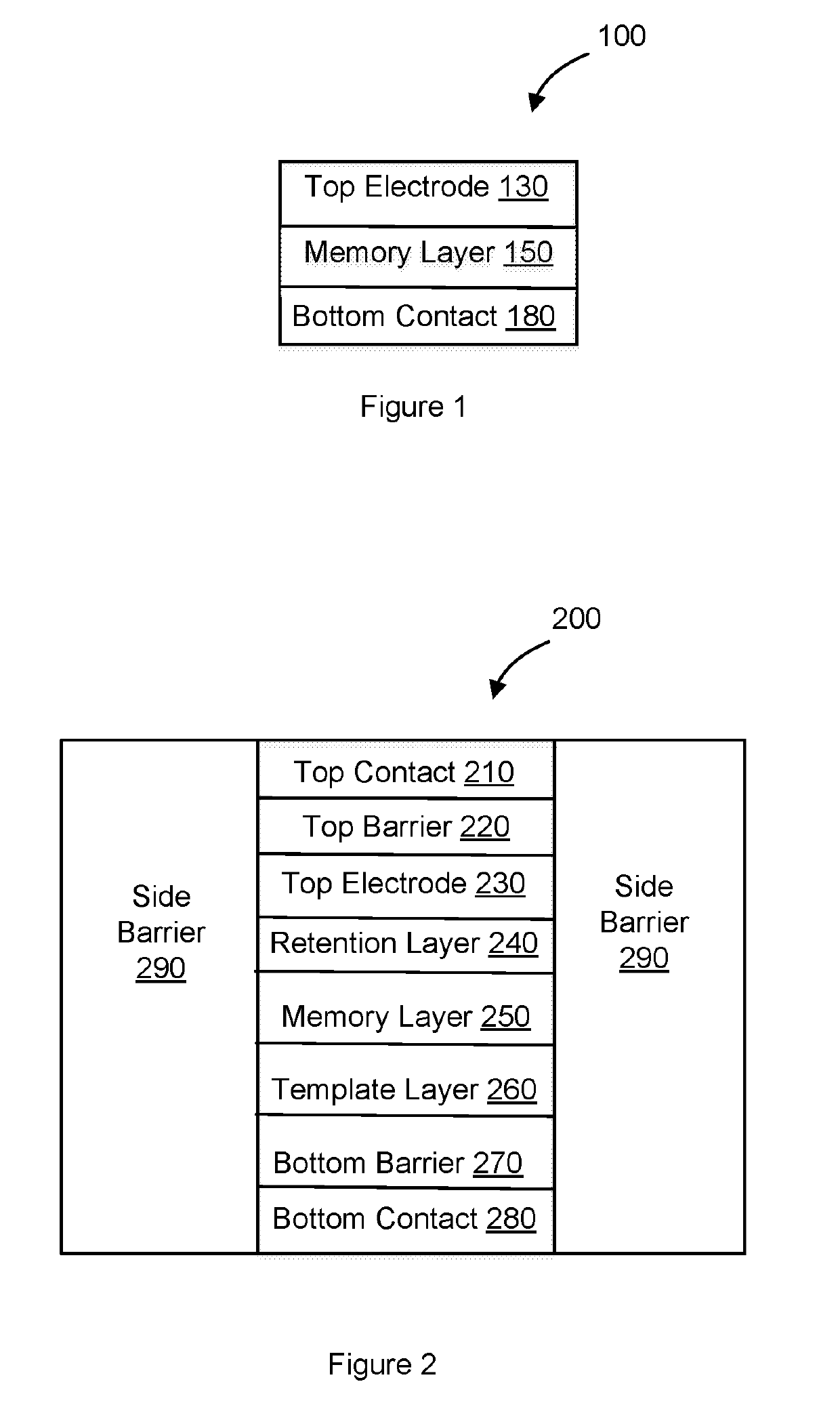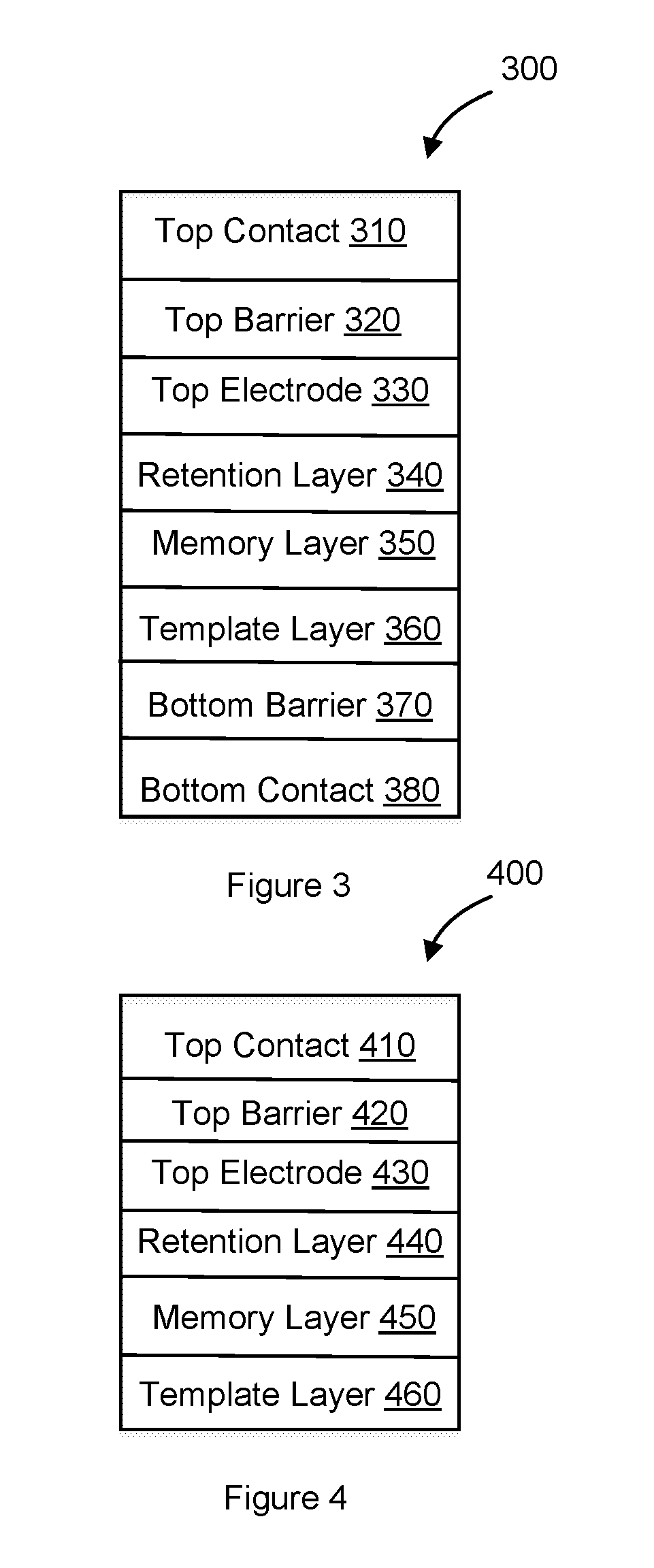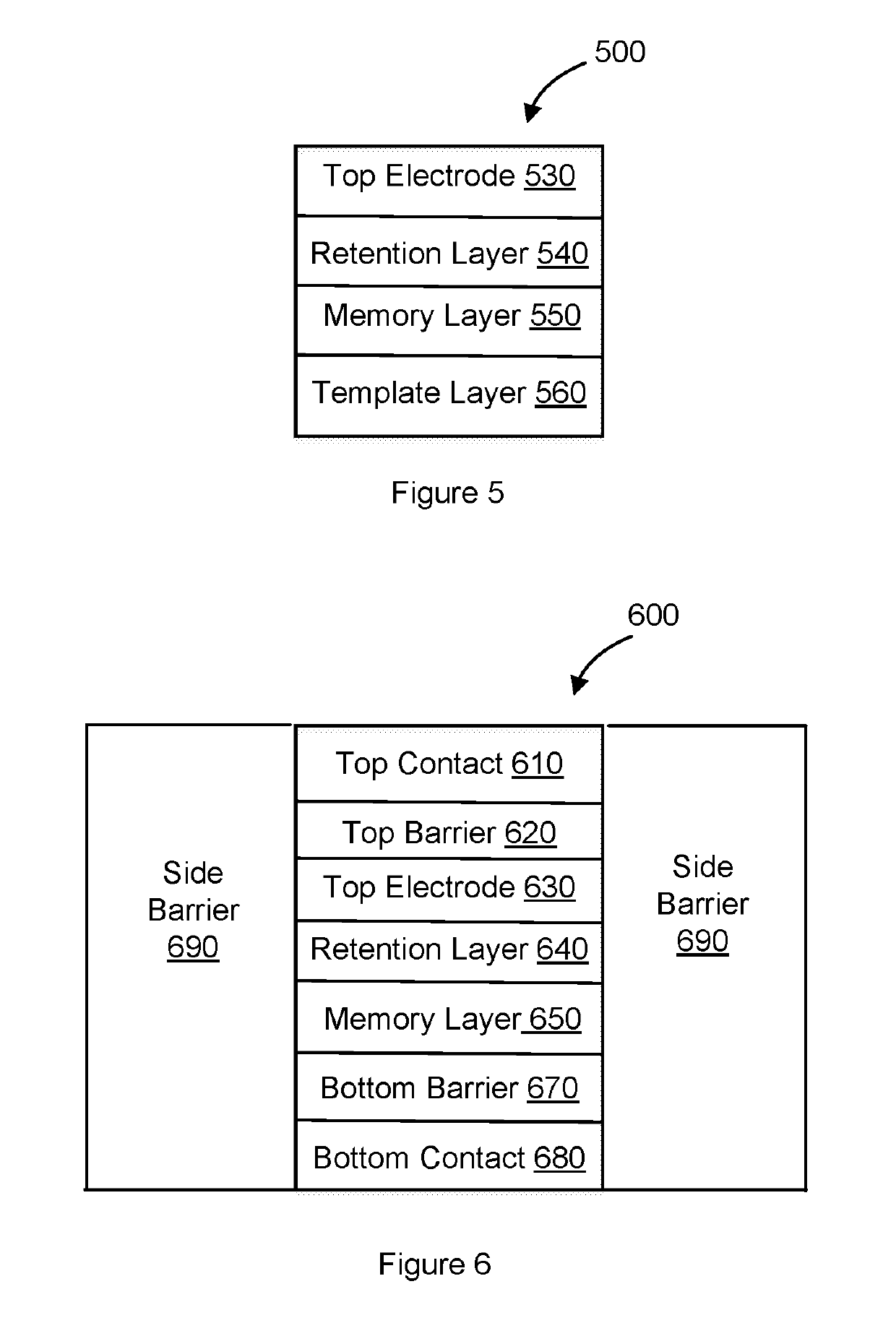Resistive memory device having a retention layer
- Summary
- Abstract
- Description
- Claims
- Application Information
AI Technical Summary
Benefits of technology
Problems solved by technology
Method used
Image
Examples
Embodiment Construction
[0031]Particular embodiments of the invention are illustrated herein in conjunction with the drawings.
[0032]Various details are set forth herein as they relate to certain embodiments. However, the invention can also be implemented in ways which are different from those described herein. Modifications can be made to the discussed embodiments by those skilled in the art without departing from the invention. Therefore, the invention is not limited to particular embodiments disclosed herein.
[0033]The present invention is related to a nonvolatile memory device. The memory device can be utilized in a variety of applications from a free standing nonvolatile memory to an embedded device in a variety of applications. These applications include but are not limited to embedded memory used in a wide range of SOC (system on chip), switches in programmable or configurable ASIC, solid state drive used in computers and servers, memory sticks used in mobile electronics like camera, cell phone, iPod®...
PUM
 Login to View More
Login to View More Abstract
Description
Claims
Application Information
 Login to View More
Login to View More - R&D
- Intellectual Property
- Life Sciences
- Materials
- Tech Scout
- Unparalleled Data Quality
- Higher Quality Content
- 60% Fewer Hallucinations
Browse by: Latest US Patents, China's latest patents, Technical Efficacy Thesaurus, Application Domain, Technology Topic, Popular Technical Reports.
© 2025 PatSnap. All rights reserved.Legal|Privacy policy|Modern Slavery Act Transparency Statement|Sitemap|About US| Contact US: help@patsnap.com



